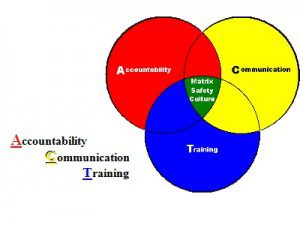 Many company leaders and managers wonder, “Are we talking about safety too much?” The answer: “No one but you knows.” Realize that everyone may be a little overwhelmed with all kinds of communications and distractions. That’s why talking about safety effectively is more important than ever.
Many company leaders and managers wonder, “Are we talking about safety too much?” The answer: “No one but you knows.” Realize that everyone may be a little overwhelmed with all kinds of communications and distractions. That’s why talking about safety effectively is more important than ever.
TALKING SAFETY
The fact is that it’s important to talk about safety. Injuries are a concern for everyone: They are emotional triggers, and they hurt everyone in the organization and at home. Nobody wants to see another person hurt, and nobody wants to get hurt.
Consider this question: How can you talk about safety in such a way that your employees don’t get sick of hearing about it and therefore stop listening?
THE EMOTIONS OF SAFETY
Too often people view and deal with safety in an emotional way. Management gets frustrated when injuries occur and eventually they come out swinging “the safety hammer.” Pressure mounts and the managers step-up their discipline (or corrective action).
Recently, a safety director for a large company described a situation where an employee was fatally injured and two others experienced serious injuries. For years the safety director had tried to get management’s attention about needed improvements, but without success. Now everyone in the company seems to be a safety expert; every executive has the answer-and everyone has a different solution.
When this kind of situation emerges, everything becomes a mess. Finger pointing abounds, and the employees choose sides: Either the problem is technical or it’s the people. Employees often begin to be fearful of retribution and decide not to report incidents or injuries. Should this scenario ever occur in your company, you need to diffuse the situation by focusing on the safety process.
THE SAFETY PROCESS
In order to maintain safety at a level that prevents injuries, you first have to work on dealing with the emotional issues so the focus is on good decision-making. Realize that safety is both art and science and needs to be treated as such. The “art” is about dealing with people-establishing accountabilities, holding people responsible, and building trust. The “science” of safety is about dealing with behavioral and technical processes. Hazard control is an example of a process that includes both behavioral and technical aspects.
The technical process of safety involves identifying the hazard, abating or controlling it, engineering so it no longer exists, or changing work processes to include the use of protective or personal protective equipment.
When a hazard control has been established, practiced, and proven over time, workers and leaders accept it as normal, and it becomes “common sense” safety. Sometimes acceptance of a new rule or work practice seems to take a while. And often, people don’t even understand their own resistance to the process.
THE MILLION DOLLAR QUESTION
Bob, a safety committee chairperson, works in an industry where workers are required to wear protective personal equipment (PPE). When people don’t wear the appropriate PPE, the results can be devastating because workers are exposed to the hazards of high voltage electricity. As Bob explains: “We had someone get hurt last month because he wasn’t wearing sleeves with his high voltage rubber gloves. We all know that it’s a good work practice to wear the sleeves, so why doesn’t everyone just do it? Why don’t they get it?”
“Why don’t workers get it?” That’s the $1,000,000 question. Experience shows that acceptance of new rules, regulations, and work practices happens faster when workers are engaged in the process of determining the appropriate PPE for the hazards of their job.
In your next safety meeting, take time to engage workers in a discussion about what the hazards are in their workplace. Get them to think both deep and broad about dangers they can encounter. Make a list of these on a flip chart so everyone can see. Then ask what can be done to control each hazard. Be sure to use your safety rule book and documented safe work practices during this discussion. Finally, ask the group “Which of these controls will we always do?” Most of the time, the answer will be “All of them!” When workers get involved in this kind of discussion, it can have a big influence on how your organization talks about safety.
TAKE ACTION FOR A SAFE WORKPLACE
Sure, some people may think your company talks about safety too much, and maybe they’re right. Yet safety is an important topic that needs to be discussed. Consider how you can get everyone involved in the discussion and how you can encourage them to take action to ensure that nobody gets hurt. When you do, you’re likely to find the answer to that $1,000,000 question.
Article Source: http://EzineArticles.com/?expert=Carl_E_Potter
Discussion
No comments yet.